Pranayama
Pranayama is the conscious and deliberate control and regulation of the breath (Prana means breath, ayam means to control, to regulate). With each breath we absorb not only oxygen, but also Prana. Prana is cosmic energy, the power in the Universe that creates, preserves and changes. It is the basic element of life and consciousness. Prana is also found in food, therefore it is very important to have a healthy and wholesome vegetarian diet.
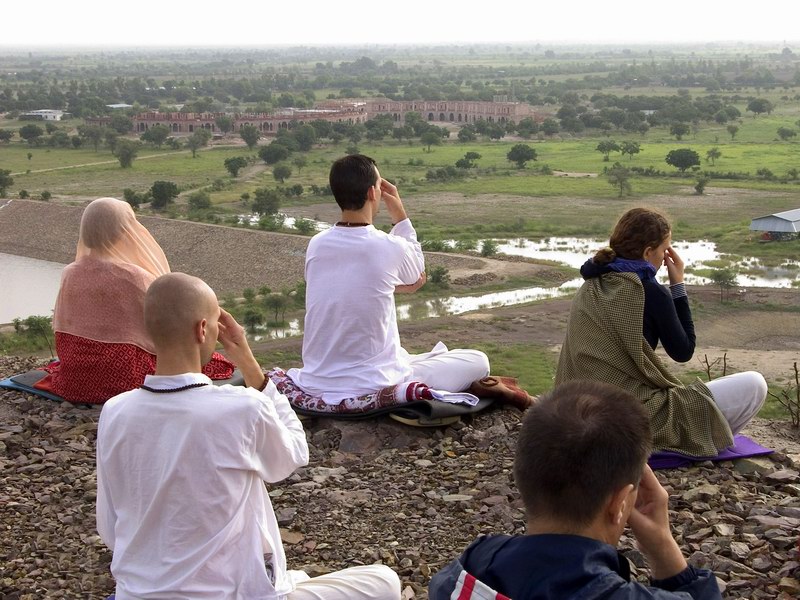
The conscious guidance of Prana in the body gives rise to an increase in vitality, physical detoxification and improved immunity, as well as the attainment of inner peace, relaxation and mental clarity.
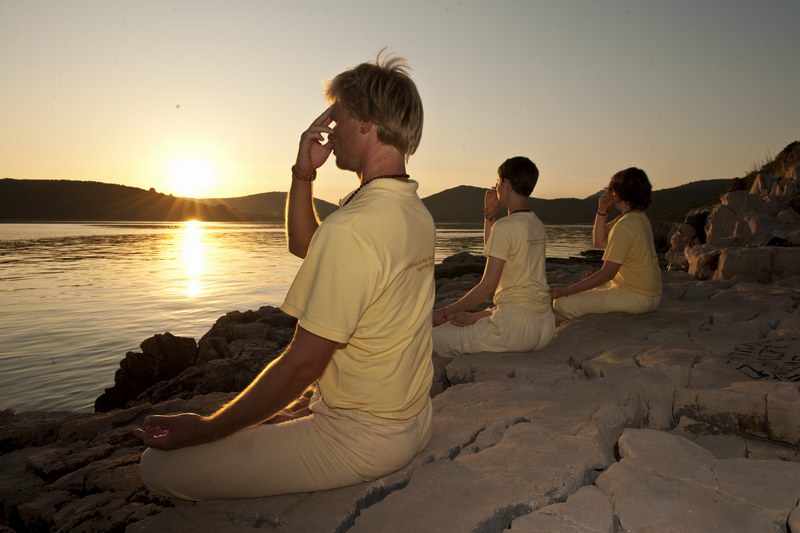
In mythology it is said that the length of a person's life is predetermined by the number of breaths. The Yogi tries to “conserve time” and lengthen life by slowing down the breath.
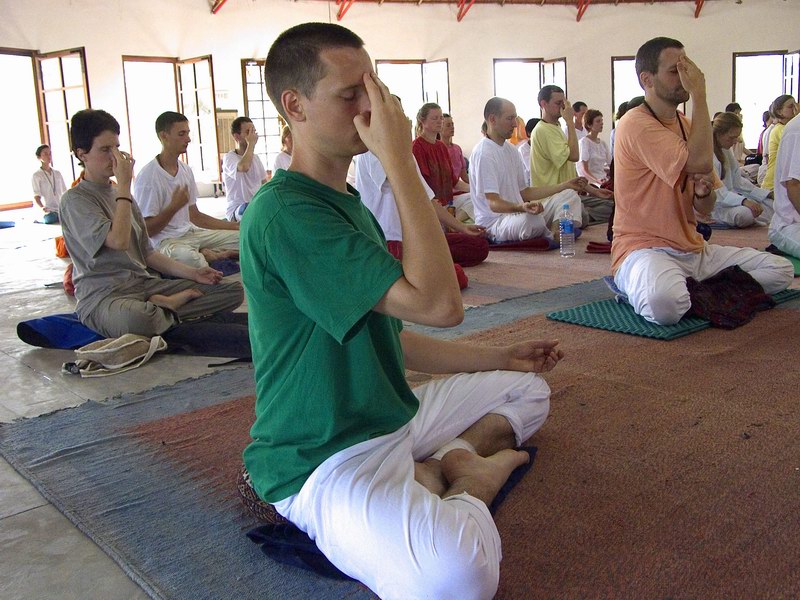
Effects of Pranayamas
Physical Effects
- Preservation of the body’s health
- Detoxification of the blood
- Improvement in the absorption of oxygen
- Strengthening the lungs and heart
- Regulation of blood pressure
- Regulation of the nervous system
- Supporting the healing process and healing therapies
- Increasing resistance to infection.
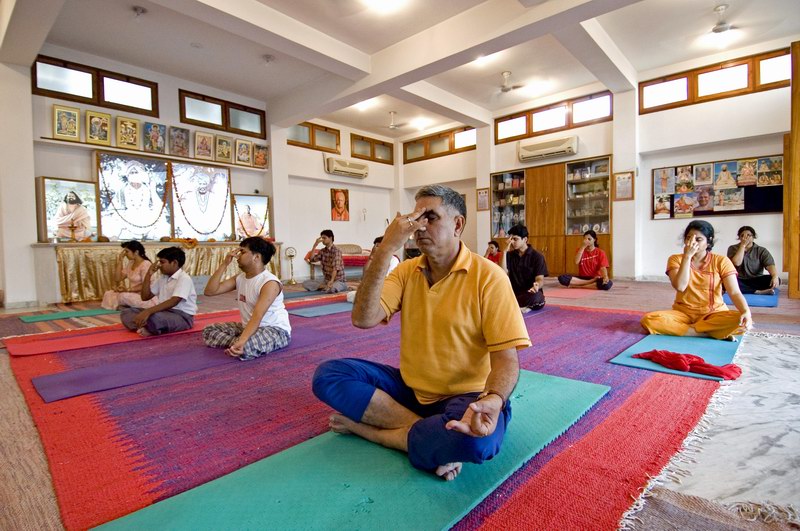
Mental Effects
- Elimination of stress, nervousness and depression
- Quietening of thoughts and emotions
- Inner balance
- Release of energy blockages.
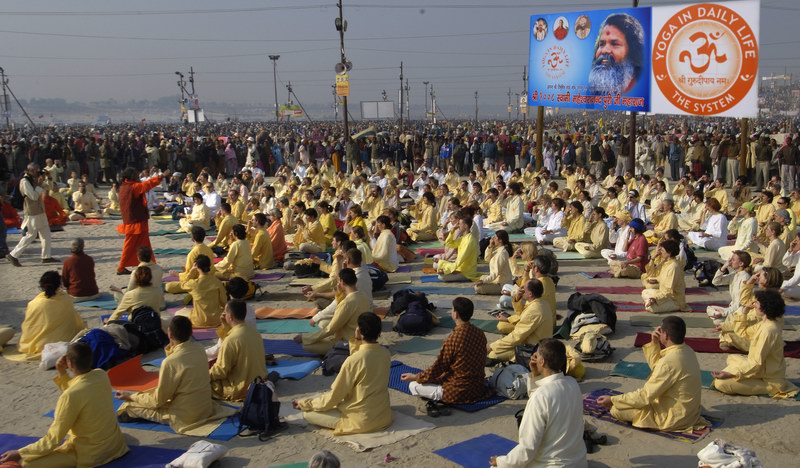
Spiritual Effects
- Deepening of meditation
- Awakening and purification of the Chakras (energy centres)
- Expansion of consciousness.
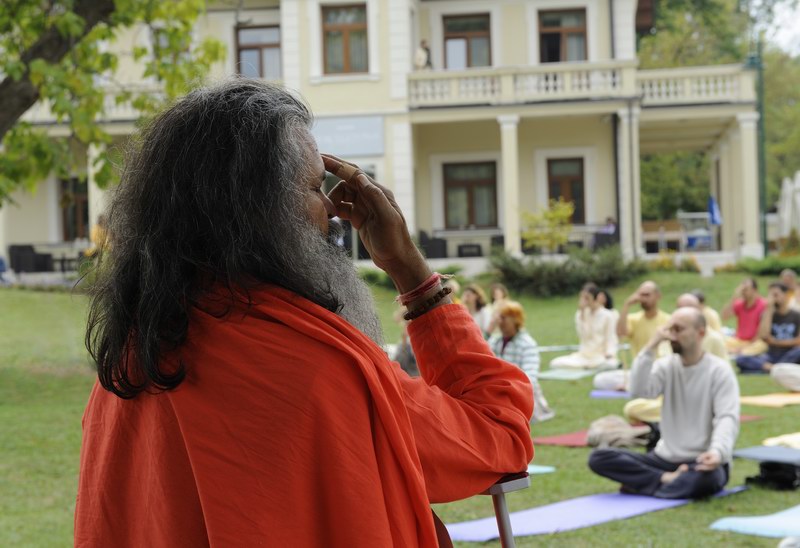
The Full Yoga Breath - Source of Life
About the Breath
In order to live and keep the body healthy, we require not only food and water, but also air to breathe. The air we breathe is even more important than eating and drinking. Without food we can survive several weeks. Without water we can survive for a few days. However, without breathing we can survive for just a few minutes. Our life begins and ends with a breath.
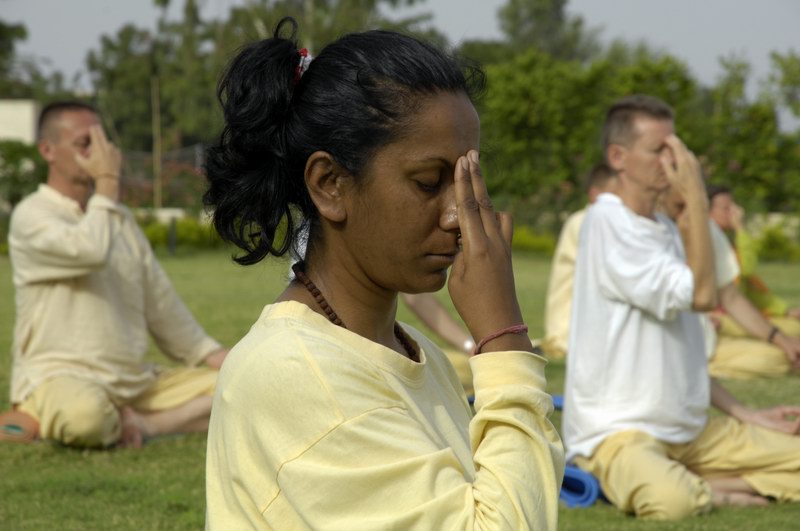
Within one breath, three phases can be distinguished:
- Inhalation
- Exhalation
- Pause in breathing
One phase flows into the other. The exhalation should last approximately twice as long as the inhalation. The pause in breathing arises naturally at the end of the exhalation phase and lasts until the impulse to inhale occurs of its own accord. The inhalation forms the active part of the breath. With it comes contraction of the respiratory muscles. The exhalation is the passive part of the breath, the phase of relaxation.
Quiet, regular and deep breathing is decisive for our health. It has a harmonising and calming effect upon body and mind. On the other hand, breathing that is too rapid and shallow has a negative influence upon us, as it can intensify nervousness, stress, tension and pain.
A frequent mistake in breathing is drawing the abdomen in as the chest expands, rather than relaxing the abdomen forwards. Drawing in the abdomen considerably impairs deep breathing. Often fashion and restrictive clothing inhibits this natural movement.
Therefore, all exercises in Yoga, including the breath exercises, should be practiced slowly and without unnecessary tension - without ambition or competition. The breath should be silent and through the nose (Because the air is filtered, moistened and warmed within the nose.). Over a period of time and with practice, one tries to gradually slow and lengthen the breath. Only through correct breathing can the full effects of the Yoga exercises totally unfold.
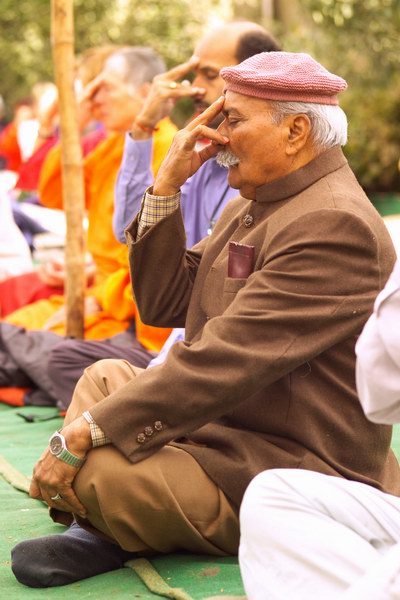
With all exercises it is very important that they are practised in a physically and mentally relaxed state. A physically relaxed state is essential, as it is only then that the muscles can stretch in the respective Asana without creating tension. A mentally relaxed state is necessary so that the Asanas can be practiced with full concentration on relaxing and breathing. By exhaling consciously, one can considerably assist in the relaxation of the muscles, as the relaxation of the muscles is connected to the exhalation.
Yoga shows us how body and mind can be influenced by different breathing techniques. Unfortunately our normal method of breathing has moved a long way from the natural and correct way of breathing. A fundamental requirement to restore healthy breathing is practice of the Full Yoga Breath.
The Full Yoga-Breath
To help in learning the Full Yoga Breath three types of breathing are distinguished:
1. Abdominal or Diaphragmatic Breathing
With an inhalation, the diaphragm moves downwards compressing the abdominal organs so that the abdominal wall extends outward. With an exhalation the diaphragm moves upward again and the abdominal wall flattens. In contrast to the inhalation, the exhalation is a passive process.
The abdominal breath forms the basis of breathing as it allows the full use of lung capacity, slows down the breath in a natural way and promotes relaxation.
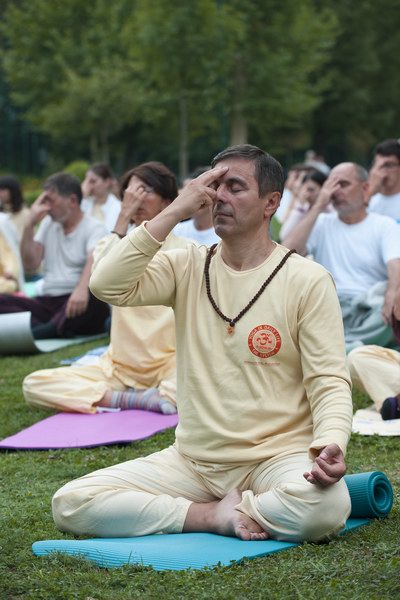
2. Chest Breathing
With an inhalation, the ribs are lifted so that the chest expands. With an exhalation, the ribs return to their original position. The air flows into the middle lobes of the lungs. The lungs are not filled as much as in abdominal breathing and the breath is more rapid and shallow.
This breathing occurs automatically in stressful situations, due to nervousness or tension. The unconscious use of this more rapid form of breathing creates a heightened state of tension. To break this unfavourable cycle, slow and deep abdominal breathing is of great assistance.
3. Collarbone (Clavicular) Breathing
With this type of breathing the air flows into the top of the lungs. With an inhalation, the upper part of the chest and collarbones are lifted and with an exhalation, they lower again. The breath is very shallow and rapid.
This type of breathing occurs in situations of extreme stress and panic, or where there is great difficulty in breathing.
In a healthy and natural breath, all three variations occur. Each is united into a flowing wave, which proceeds from the bottom to the top of the lungs with the inhalation, and from the top to the bottom with the exhalation. With the inhalation, the abdomen extends forward and the chest is expanded. With the exhalation the chest and the abdomen return to their original position. When one practises this type of breathing utilising the full lung capacity naturally and without any force, one is practising the Full Yoga Breath.
“Yoga in Daily Life - The System” has a perfect eight-level structure, which should be followed systematically, level by level.
Read more about Pranayama in eSystem